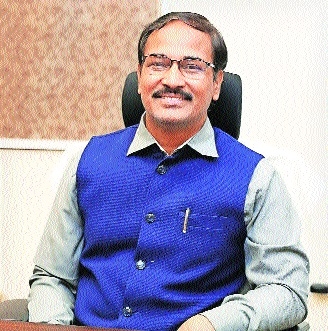‘Dharma formed the core of Bharat’s agelessness’
| Date :22-Jan-2023 |

Dr Madhusudan Penna
By Biraj Dixit :
IN THE constant flowing river of time when a civilisation is both age-old and ageless, many tributaries get entwined often. Concepts overlap, lines between history and mythology blur, traditions blossom, degenerate and make way for new ones. The important thing, however, is the perennial nature of its existence. Such is the story of Bharat - the ageless wonder of a civilisation where ancient still finds itself firmly entrenched into the modern. An attempt to understand Bharat as it was when civilisation first emerged upon its soil and thereon, is often based on our understanding of today’s definition of a country, a nation, and a republic. But, when we delve deeper into the issue, we need an understanding from an altogether different angle -- which belongs to those days when none of today’s definitions ever existed. Ask Dr Madhusudan Penna, Acting Vice Chancellor of the Kavikulguru Kalidas Sanskrit University, and a scholar of international repute who has written a couple of epics, and he bends backwards -- in time -- to set right our definitions.
He begins by stressing that all personal and collective human actions and orientations of the yore were guided by the concept of ‘dharma’ which was nothing but a set of ethical, moral, social and spiritual constructs which the society accepted as its guide-book. Of course, Dr Penna makes it clear that the concept of ‘dharma’ was never a frozen one, but kept evolving in time, value-added by ‘rishis’ and sages and seers as well as kings and philosophers as times changed, as geographies gave way to different physical features, as cultures changed as per the socio-political needs of the then societies. The ‘Bharat’ of that period very much envisaged the concept of ‘Rasthra’ within which were many ‘janapads’, ‘mahajanapads’ and ‘rajyas’, informs Dr Penne. The ancient India had accepted the King as the occupant of the apex of the socio-cultural pyramid. The concept was that he was the physical manifestation of the idea of ‘Vishnu’, the nurturer of the human community.
As such he was the protector and the nurturer. And though he had the ultimate authority, he was never the absolute ruler but the one who always bound by the principles of ‘dharma’. Unlike the western concept of ‘Divine Rights’ of the King, the emphasis in India was on divine attributes of the King. “The ancient shloka describing Raja, emphasises that, ‘He who gives comfort to his people is a true Rajah.’ The King even in abundance of his power was not above the Dharma,” says Dr Penna adding, “Many stories of Vedic period make it clear that wars were fought for preserving ‘Dharma’. We know that Lord Krishna, of the Yaduvansh of Gujarat had travelled all the way to Assam to end the tyranny of ‘Narkasur’, thereby establishing ‘Dharma’. Even in Bhagwat Geeta, the Lord assures of ‘Dharmasansthapanarthaya....’, that He will reincarnate for establishment of ‘Dharma’.” Many stories of the yore tell us how it was not easy for even the most pious of all ‘Rajahs’ to decode perfectly this moral code of ‘Dharma’. For, it was not a commandment entrenched on stone but many a time, the tiny voice within. “Dharma,” elaborates Dr Penna, “underlined that in times of dispute between the ‘Dharmashatras’ and the ‘Antaratma’, the voice of the latter was to be heard and acted upon.” “The rigidity of our caste system is often talked about but Upanishads offer examples when the supremacy of Dharma without prejudice gets established,” says Dr Penna narrating the story of a very learned Brahmin, whose pride in his knowledge, is shattered by a housewife who tells him to gain knowledge in the practice of Dharma from Dharmavyadha, a butcher. Thus, in a nation, age-old and ageless, the one key factor to its eternality is this adherence to that moral code called ‘Dharma’. As this old nation of the young moves further in recreating its own definitions, let Dharma be the guiding light, hopes Dr Penna.